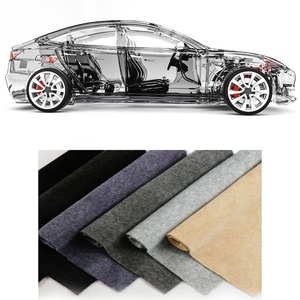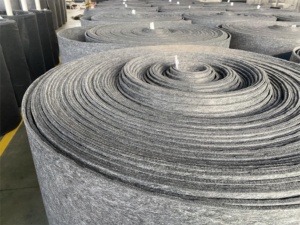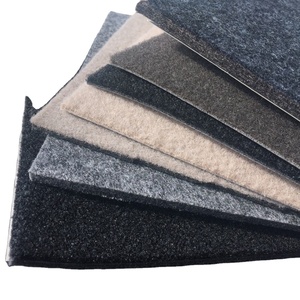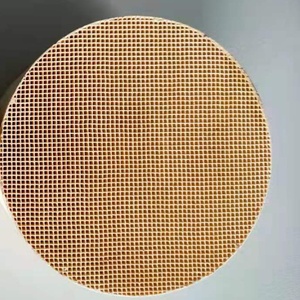
All categories
Featured selections
Trade Assurance
Buyer Central
Help Center
Get the app
Become a supplier

(3500 products available)








































Automotive substrates are the foundational materials used in the construction and assembly of vehicles. They include a wide range of components that provide structure, support, and surface for various automotive applications. Automotive substrates play a vital role in the performance, safety, and comfort of vehicles. Some common types of automotive substrates are as follows:
Metals:
Metals are one of the earliest automotive substrate materials, and they are still among the most important ones. Metals, such as steel or aluminum, are used as automotive substrate materials due to their excellent mechanical properties, including strength, ductility, and toughness. Metals have good corrosion resistance, which can be enhanced through coatings or treatments. Depending on the weight and cost considerations, metals can be used in various automotive parts, such as engine components, chassis, wheels, body panels, and structural beams.
Plastics:
Due to their lightweight and cost-effective advantages, plastics have become popular automotive substrates. Plastics generally have good chemical resistance, which makes them suitable for use in automotive fuel systems, electrical connectors, and other components exposed to corrosive substances. Depending on the specific requirements, plastics can be used in various automotive parts, such as interior trim, dashboards, door panels, bumpers, and exterior components.
Glass:
Glass substrates are mainly used in automotive windows, windshields, and displays. Glass substrates provide excellent optical clarity and transparency, ensuring good visibility for drivers and passengers. It has a smooth surface that is easy to clean and maintain. Glass substrates also have good chemical resistance and can withstand exposure to automotive fluids and chemicals. With the ability to withstand high temperatures and provide mechanical strength, glass substrates are essential for the safety and comfort of vehicles.
Composites:
To leverage the benefits of different constituents, composites are engineered as automotive substrates. Composites generally have a high strength-to-weight ratio, making them suitable for lightweight automotive structures. Composites can be tailored to meet specific performance requirements by adjusting the design and materials used in the composite.
Automotive substrates are designed to withstand the rigors of automotive use while providing performance and safety. The design of automotive substrates involves several aspects, including:
Material selection:
Automotive substrates rely on a variety of materials to ensure optimal performance. The substrate is designed with a material selection that includes considering the mechanical properties, such as tensile strength and rigidity, to provide support and durability. Flexibility is also taken into account, especially for components that need to bend or conform to curves. Additionally, the substrate's resistance to chemicals, moisture, heat, and fire is considered, given the potential exposure to harsh substances, humidity, temperature variations, and the risk of fire in the automotive environment.
Layer construction:
The construction of automotive substrates is done in layers, where each layer has a specific purpose. For example, in printed circuit boards (PCBs), there are copper layers for circuitry, insulation layers to prevent short circuits, and a protective layer to shield against mechanical damage. This layer-by-layer approach enables the creation of complex and functional substrates that meet the requirements of automotive applications.
Surface treatment:
To enhance the performance and durability of automotive substrates, surface treatments are applied. These treatments may include cleaning and preparing surfaces to ensure proper adhesion of coatings or films. Protective coatings are also used to shield the substrate from environmental factors and wear and tear. Conductive coatings are applied where electrical conductivity is needed, and specialized adhesive films are used for bonding components together during assembly.
Testing and quality control:
The automotive substrate undergoes rigorous testing to ensure it meets industry standards. This testing includes evaluating the mechanical properties of the materials used, such as tensile strength and flexibility. Chemical resistance tests are conducted to assess the substrate's ability to withstand exposure to harsh substances. Additionally, substrates are tested for their performance in terms of heat resistance, moisture resistance, and fire safety. Quality control measures are implemented throughout the manufacturing process to inspect and verify the substrate's integrity, ensuring it is free from defects and ready for use in automotive applications.
Automotive substrates are used in many applications within the automotive industry. They serve as a foundation for components and systems, enhancing performance, safety, comfort, and aesthetics. Automotive substrates are used in:
Interior components and systems:
Automotive substrates such as plastics, fabrics, and composites are used to make seats, dashboards, door panels, and trim. They provide a comfortable and visually pleasing environment for the occupants. Metals, plastics, and composites are used as substrates for switchgear and control systems. They enable the proper functioning of the vehicle's electrical and electronic systems. Automotive substrates like sound-deadening mats and foam layers improve the acoustical substrate sound quality and insulation. They dampen noise from the engine, tires, and external environment, providing a quieter ride.
Exterior components and systems:
Automotive substrates such as metals, plastics, and composites are used in body panels, bumpers, and trim. They ensure durability and protection against the elements. Glass and specialized polymer substrates are used in windows and windshields. They provide clarity for visibility and protection from the weather. Metals, plastics, and composites serve as substrates for lighting systems. They ensure proper illumination for safety and visibility.
Powertrain and performance components:
Automotive substrates like metals and heat-resistant composites are used in engine components, transmission parts, and exhaust systems. They can withstand high temperatures and stresses. Electrical components and devices in the powertrain use metal and polymer substrate materials. They support the vehicle's electrical systems, including batteries, motors, and control units.
Safety systems:
Automotive substrates like metals, plastics, and composites are used in airbags, seat belts, and crumple zones. They ensure passenger safety during a collision. Automotive substrate materials, including sensors and specialized polymers, are used in anti-lock braking systems, traction control, and collision avoidance systems. They enhance vehicle safety and performance.
HVAC and climate control:
HVAC systems use metal and plastic substrates for compressors, blowers, and ductwork. These substrates transport and regulate air conditioning refrigerants and control the vehicle's temperature and airflow. Automotive substrates like metals and specialized polymers are used in battery packs, including cells and modules. They support electric vehicles' energy storage and management systems.
When choosing automotive substrates, these key factors need to be considered:
Performance Requirements:
Clearly define the performance requirements for the automotive application. Consider factors such as strength, weight, heat resistance, vibration resistance, chemical exposure, and moisture resistance. The performance requirements will guide the selection of the right substrate that meets the specific needs of the automotive application.
Material Compatibility:
Consider the compatibility of the automotive substrate with other materials used in the application. Evaluate factors such as adhesion between layers, chemical compatibility, and the ability to join or integrate with other components. Material compatibility ensures the longevity and reliability of the automotive substrate in its intended use.
Manufacturing Processes:
Evaluate the manufacturability and processing of the automotive substrate. Consider factors such as ease of fabrication, availability, and the ability to perform required manufacturing processes (e.g., molding, machining, forming). The automotive substrate should be easy to work with and compatible with existing manufacturing processes to ensure efficient production.
Cost Considerations:
Assess the cost implications of the automotive substrate. Consider the material cost, potential processing costs, and the impact on the overall product cost. Balancing performance, quality, and cost is crucial to ensure the economic viability of the automotive application.
Regulatory Compliance:
Ensure that the selected automotive substrate complies with relevant industry standards and regulatory requirements. Stay updated on the latest regulations to ensure the automotive substrate meets safety, environmental, and performance standards.
Supplier Evaluation:
Evaluate and select suppliers who can provide the automotive substrate. Consider factors such as supplier reputation, product quality, delivery reliability, and technical support. Collaborating with a trusted supplier ensures a reliable source of automotive substrates and access to technical expertise.
Q1: What are automotive substrates?
A1: Automotive substrates are materials used in the construction of vehicles. They serve as a foundation or base layer upon which other components, materials, and coatings are applied.
Q2: What is the purpose of automotive substrates?
A2: The purpose of automotive substrates is to provide structural integrity, support, and performance characteristics for various automotive components. They play a crucial role in the overall safety, durability, and efficiency of vehicles.
Q3: What are some common types of automotive substrates?
A3: Some common types of automotive substrates include metals, plastics, composites, and glass. These materials are chosen for their specific properties and performance requirements in different automotive applications.
Q4: How do automotive substrates contribute to vehicle safety?
A4: Automotive substrates contribute to vehicle safety by providing a strong and reliable foundation for components such as brakes, tires, and structural parts. This ensures that vehicles can withstand forces, protect occupants, and perform reliably on the road.
Q5: What factors are considered when selecting automotive substrates?
A5: Factors considered when selecting automotive substrates include material properties, performance requirements, cost, weight considerations (for fuel efficiency), and compatibility with other materials used in vehicles.